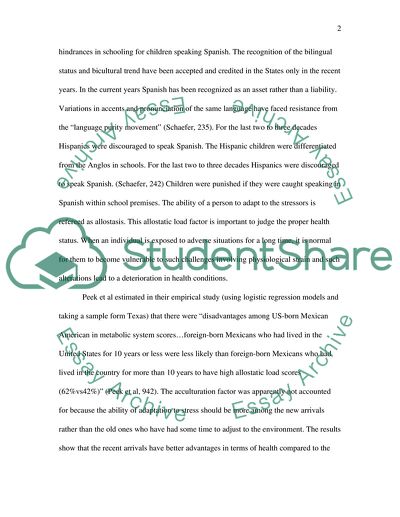Cite this document
(“Acculturation of Hispanic Population in the United States Research Paper”, n.d.)
Retrieved from https://studentshare.org/culture/1569160-writers-choice
Retrieved from https://studentshare.org/culture/1569160-writers-choice
(Acculturation of Hispanic Population in the United States Research Paper)
https://studentshare.org/culture/1569160-writers-choice.
https://studentshare.org/culture/1569160-writers-choice.
“Acculturation of Hispanic Population in the United States Research Paper”, n.d. https://studentshare.org/culture/1569160-writers-choice.


